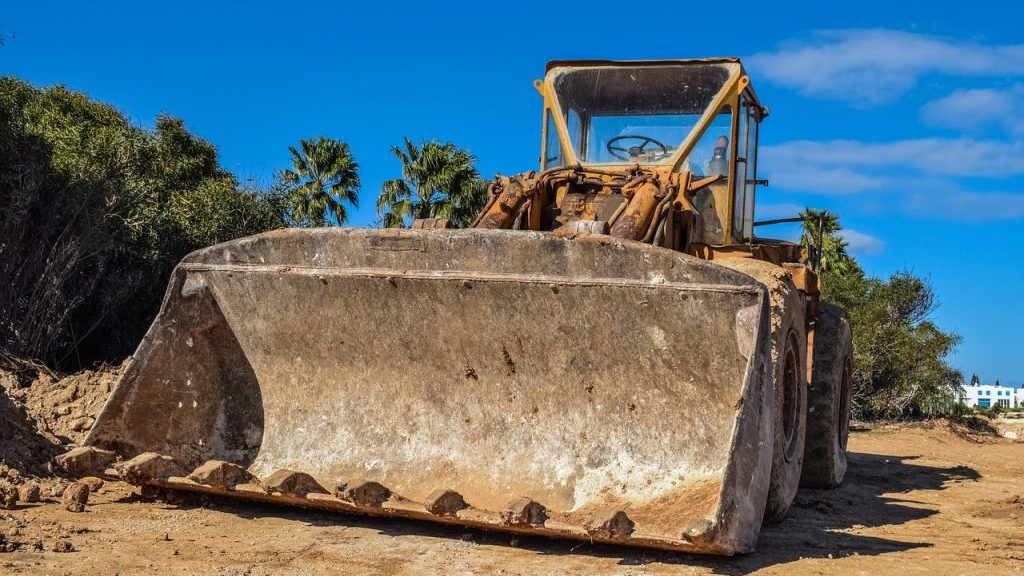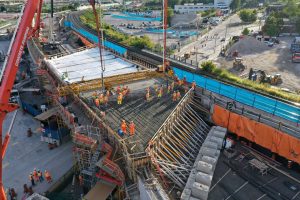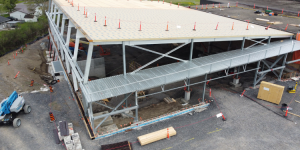The lifecycle of a construction machine usually entails several years of full-production work in its first life, followed by more years in backup or light-duty applications in its second life.
Then it goes to auction, gets purchased and has a third life.
Once it becomes too expensive to fix, it is salvaged for parts and the rest goes to scrap.
One organization is giving these machines a fourth life by using them to teach about the history of construction equipment.
The Historical Construction Equipment Association of Canada (HCEA) Canada collects and restores historical construction equipment and shows them at the Simcoe County Museum located in Minesing, Ont. Items in the collection are donated to the association.
At several events throughout the year, the association displays its collection along with equipment owned by members of the association and the equipment owned by the Simcoe County Museum. At these events, such as the Wheels and Tracks event that took place at the museum in June, nearly 100 pieces ranging in age up to more than 100 years old were on display.
The show, as well as the association, have seen dramatic growth.
At this year’s event more than 1,800 people attended, which is a new record for the show.
“Our first equipment event at the Simcoe County Museum in October 1999 became the basis for future Wheels and Track events. That same year, HCEA Canada put on a year-long display inside the museum to garner more interest in our activities,” says Frank Rooney, a board member with HCEA Canada.
As well, the association grew from 20 members when it started in 1996 to 350 members today.
The number of machines on display grows every year, too, he adds.

“HCEA Canada was fortunate to be able to obtain in 2017 several antique machines from the estate of a long-time member, Charles Matthews from Thornhill, Ont.,” says Rooney. “All machines are in working order including a 1950s Insley shovel, an I-H TD9 crawler loader and a small Cletrac crawler loader. Other recent donations include a Cletrac BD dozer and a ‘50s-era Leyland tandem truck that was part of the Weller Tree Service fleet.”
The association has had a partnership with the Simcoe County Museum since 2002 that allows it and their members to store their machines on the outdoor property behind the main building of the museum.
Directly behind the main building are the heritage village buildings, including a 19th century church, blacksmith shop and train station. Featured among the structures are smaller displays including steam-powered wood-splitting machines, various “hit and miss” single stroke engines and pumps, rock crushers and more, as well as a food vendor and large sandpit with toy construction equipment.
Past the machine sheds that house toy collectibles of historic equipment and other heavy equipment paraphernalia, is the Corral, which features three historic excavators, including a 1950s Little Giant cable hoe restored by an HCEA Canada member in 2000 and a 1939 Dominion shovel, which was manufactured in Montreal.
Then, you can walk past the static displays of historic tractors, trucks and other equipment or take the tractor-pulled people mover to the first pit, which features, among other working equipment displays, the museum’s popular 1923 Erie steam shovel and the Sandy crusher, which was designed by an Ontario mechanic and manufactured in Goderich.
A second pit features dozers, motor graders and scrapers, such as the 1950s-era LeTourneau model D with electric motors (for scraper cable functions) and electric steering.
As part of the association’s ongoing mandate to make history real, it works with the museum to provide information that will be used to produce detailed educational signs that supports the equipment on display.
In addition to the make and model information, the usage and ownership history (when possible) as well as the manufacturer and restoration information is included.
The association is also developing an onsite library located at the museum that will contain more than 1,500 documents, manuals and artifacts for HCEA members to explore and research.
Named in memory of Bill Mitchell, a founding member who gifted many of the documents, the accessible collection will consist of service and parts manuals along with sales literature of the major manufacturers from 1930 onward.
All HCEA Canada members have access to this library and can access artifacts as a perk of membership. Volunteers are always in need to help in this area.
The HCEA’s next public exhibit — the Last Blast — returns to the museum on Oct. 13.
In addition to the events held at the museum, HCEA Canada attends other off-site events such as Steam Era, the International Plowing Match and displays at the National Heavy Equipment Show in Toronto.











Recent Comments